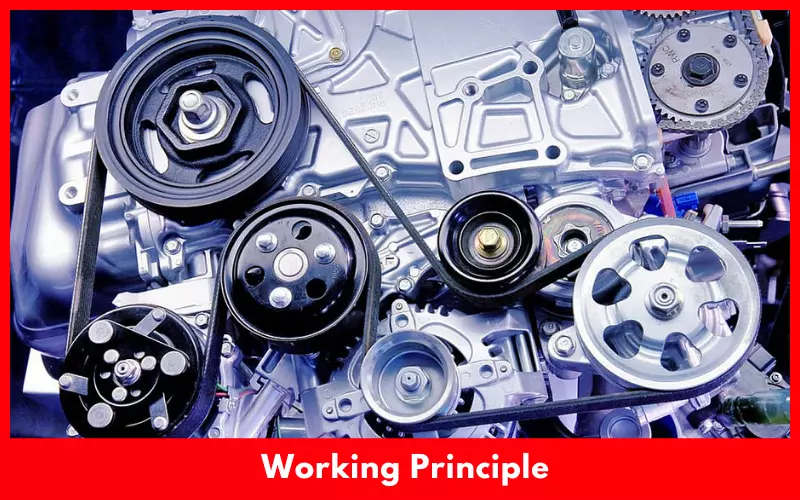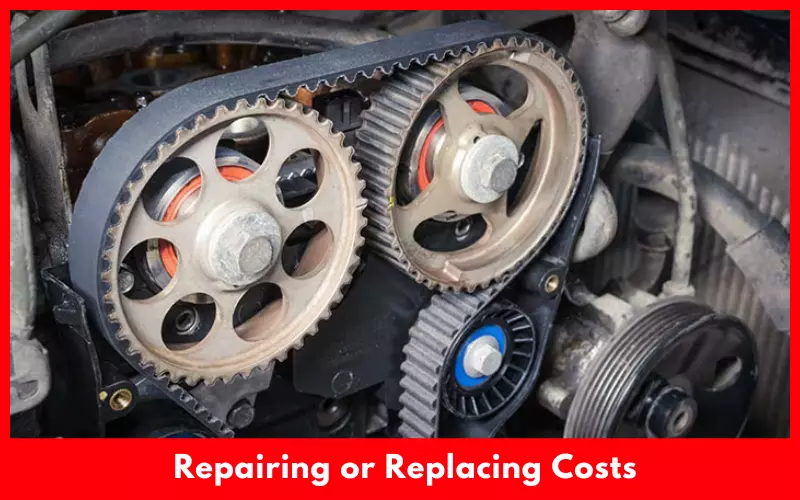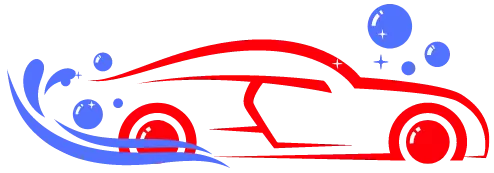What is the difference between serpentine belt vs timing belt? It’s significant, particularly for the car owner who often handles car’s routine maintenance. The main difference between these belts is serpentine belts don’t have teeth and connect the alternator and A/C compressor to the engine and are placed outside the engine.
The timing belt maintains accurate ratios between the camshafts and crankshafts have rubber teeth and are placed inside the engine. Though they have quite the same life span, the timing belt is costlier to replace than a serpentine belt.
Article Summary
Serpentine Belt vs Timing Belt Key Differences
The serpentine belt and timing belt isn’t the same thing and they have huge differences in terms of their design, appearance, and purposes.
Before deeply discussing what is a serpentine belt vs timing belt, let’s take a quick look at their key differences:
| Features | Serpentine Belt | Timing Belt |
| Working principle | Connects alternators, A/C compressors, and water pumps to the engine | Maintain accurate ratios between the camshafts and crankshafts |
| Placement | outside the engine | inside or behind the engine |
| Longevity | 60,000 miles to 100,000 miles | 60,000 miles to 100,000 miles |
| Design | Don’t have Teeth | Have rubber or metal teeth |
| Common signs of damage | Noise, wear out, Glazed appearance, too loose or tight | Noise, rough idle, low oil pressure, loss of engine power |
| Replacing cost | around $300 | $1000 or higher |
1. Working Principle
The serpentine belt connects the engine to various components of a vehicle like the alternator. It is driven by a crankshaft pulley and delivers rotary motion to run various power accessories bolted on the car’s engine.

It includes a power steering pump, oil pump, alternator, supercharger, vacuum pump, water pump, and A/C compressor. Slippage is also allowed as various systems aren’t needed to maintain precise ratios with the engine rotating parts.
Timing belts deliver rotary motion to internal engine parts and maintain accurate ratios between the camshafts and crankshafts to avoid engine damage, bad piston, and bent valves. Failure can occur if the ratios are interrupted.
Timing belts and chains maintain precise ratios by utilizing cogged pulleys and corresponding notches on the chain or belt’s inner side.
The timing belt should be lined up with the crankshaft gear’s dot marked. Otherwise, the camshaft may activate the firing orders of spark plugs and crankshaft cycles won’t respond to each other.
2. Placement
The serpentine belt is placed outside the engine and the timing belt is usually located inside or behind the engine. So you can easily see the serpentine belt after popping the hood. But the timing belt will take tiresome effort to become visible.

3. Design
Serpentine belts can be either single or multiple V belts and don’t have any teeth. It is usually made of polymer rubber and has a soft surface to coil around the pulley of the crankshaft.
The timing belts have either metal or rubber teeth for timing cogs on the crankshaft. It can be made of fiberglass-reinforced or neoprene rubber and can endure extreme heat and coolant contamination.
4. Longevity
Serpentine bet’s lifespan isn’t much different than timing belt. Both the serpentine belt and timing belt need to replace between 60,000 miles and 100,000 miles. But changing the timing belt is considerably costlier and more complicated than replacing the serpentine belt.

The timing belt turns the camshaft with operate the valves. Due to the placement behind a cover, the timing belt takes lots of labor to replace. Some engines are also designed in such a way that if the timing belt breaks down, the camshaft won’t turn. So the engine can hit the open valves while turning and can get damaged. Though the timing belt isn’t expensive, the tiresome replacing process makes it costlier to handle.
The timing belt also remains hidden in the engine and can’t observe if it wears out or gets sludge due to using the wrong oil or following a poor oil changing policy. If the timing belt fails, the engine may self-destruct in most cases.
Since the serpentine belt is external to the car’s engine, it doesn’t hurt the engine severely if gets damaged. If the belt breaks down, the engine won’t self-destruct immediately. So you can drive the car for a short distance. But the engine will overheat quickly without the water pump, so you can’t drive very far. A serpentine belt is relatively cheaper and easier to replace.
5. Repairing or Replacing Costs
It requires different time and effort to repair or replace the serpentine belt and timing belt which is reflected in the maintenance cost. Since replacing the serpentine belt is easier and quicker, it’ll cost around $300 for the job including labor.

But you may charge up to $1000 or higher for replacing the timing belt for its more complex replacing process. Remember, if you avoid the scheduled maintenance or don’t replace the damaged serpentine belt or timing belt, it can cause engine failure and cost expensive repair.
When should you replace the Car’s Serpentine and Timing Belts?
Both the serpentine belt and timing belt show various signs of getting damaged or becoming too loose or tight. For example, if the serpentine belt breaks, the water pump won’t protect the engine from overheating and the battery will dead. A damaged timing belt can cause the car engine to sputter when accelerating.
Serpentine Belt Symptoms of Damage
Noise- the car can make distinctive squealing noise while turning on the engine or accelerating. Too loose or too tight a serpentine belt can also make this irritating noise.

Wear- squeeze, pinch, and twist the serpentine belt to check for wear or frayed edges from all angles. If the belt becomes brittle or has small cracks, it’s needs replacement.
Glazed appearance- the serpentine belt needs to replace if looks glazed or slick. It can be the result of cracking or overheating and the belt won’t be able to slip properly.
The pulleys- the belt should sit on the pulley straight and aligned. If there are rubber deposits on it, your serpentine belt starts to wear.
The belt tension- when trying to move the serpentine belt, it shouldn’t move over half an inch. If moves, the belt is too loose and needs attention.
Oily belt- if the belt feels oily, there might be an oil leak somewhere or it may slip on the pulley because of the oil. It needs a deep diagnosis.
Timing Belt Signs of Damage
Odd noises- if the timing belt makes a tricking or humming noise, its needs replacement. It’s a sign of wear out.

Rough idle- the timing belt may slip and encourage the ignition timing to run out of sync if some of the teeth break down. It may cause stalling or rough idle.
Low oil pressure- the teeth of the timing belt may break off and drop into an oil pan. It can reduce the engine oil pressure and end up with engine failure.
Loss of engine power- if the belt slips off snaps or pulleys, the engine can misfire or lose power. If so, you must replace the timing belt.
Which is more Importance: serpentine belts or timing belts?
Both serpentine belt and timing belt has different jobs and each are required for unique reasons. If the timing belts get damaged, the engine will not run. Hence the serpentine belt will become useless as it won’t drive any accessories on the engine’s front. In this case, a timing belt or chain is more important than a serpentine belt as it’s more essential for the engine’s operation.
In contrast, a serpentine belt isn’t severely essential for running an engine. if the engine depends on a serpentine belt for driving the water pump, the engine won’t perform for a longer time without this belt due to overheating. But the engine will run for a while.
The power steering, air conditioning, and alternators aren’t also strictly essential for that is driven by a serpentine belt. Though these components make the driving experience more safer and comfortable, an engine can run without these. So the timing belt is more vital than a serpentine belt.
FAQs
Should you replace the serpentine belt when replacing the timing belt?
Both the serpentine belt and timing belt have almost the same life span. Though they don’t affect each other’s performance directly, you should replace these belts around the same time.
Can an engine run without a timing belt?
An engine can’t run without a timing belt. It rotates the engine’s crankshaft and camshaft and allows the cylinder to fire. If the timing belt fails, the engine won’t run and may stop working.
Is the serpentine belt the same as the alternator belt?
The serpentine belt is also known as an engine belt or alternator belt. It gets these names due to the shape and the way it snakes around the engine.
Final Words
As you can see, there are significant differences between the serpentine belt and the timing belt. Both belts have almost the same life span and are essential for an engine to operate smoothly and make the driving experience more comfortable.
So, you should keep both of these belts in good condition by checking and maintaining them routinely and replacing them before getting damaged completely. Though the serpentine belt will give a bit of time to replace, you can’t run the vehicle without a timing belt.

